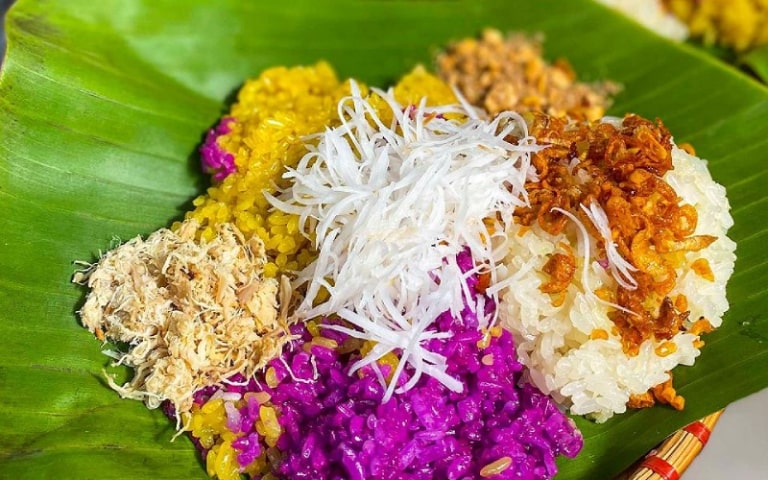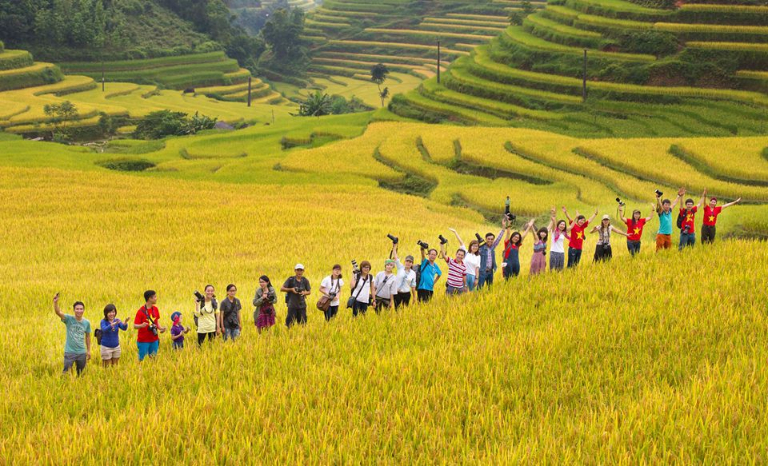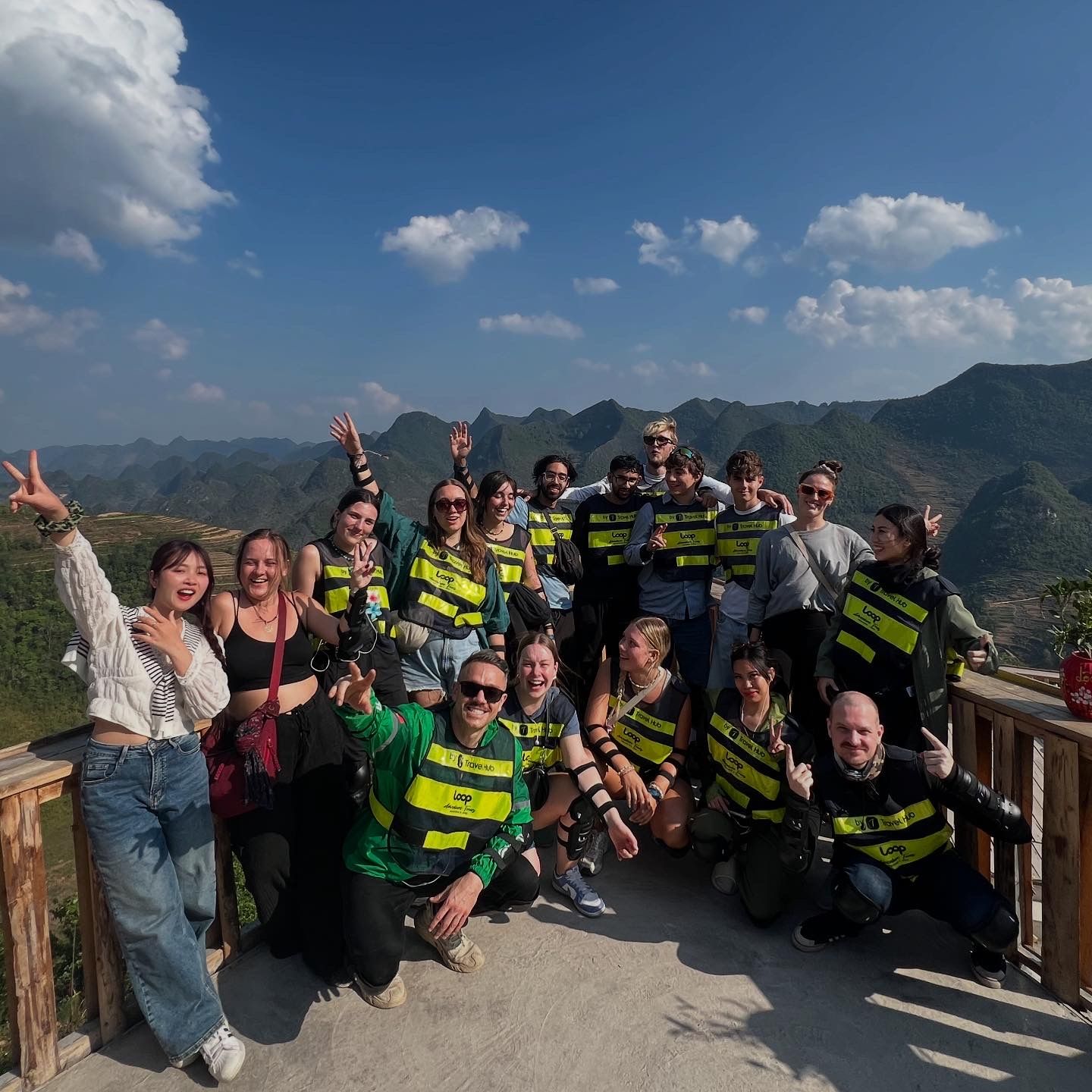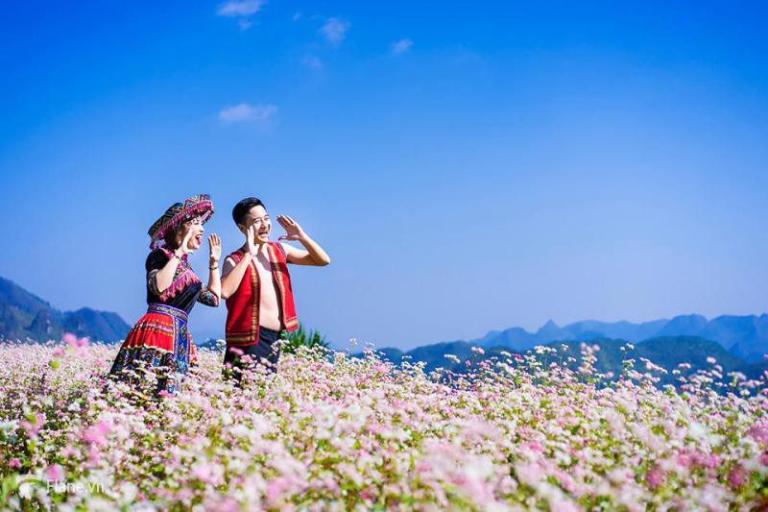Ha Giang, in Vietnam’s far north, is often known for its dramatic mountain passes and the famous Ha Giang Loop. But behind the spectacular scenery lies a rich tapestry of cultural traditions. Over 19 ethnic minority groups - including Hmong, Tay, Dao, Nung, Lo Lo and La Chi - call this province home, each contributing their own festivals, rituals, crafts and costumes to the region’s unique identity.
If you want your Ha Giang journey to be more than just a motorbike adventure, understanding these Ha Giang cultural traditions will help you connect deeply with the land and its people.

Perfect Tours for You:
Ethnic Diversity – The Heart of Ha Giang Culture
Ha Giang’s culture is defined by its ethnic diversity. Hmong communities live on high rocky plateaus, Tay and Nung settle in valleys and near rivers, while Dao, Lo Lo and La Chi occupy scattered mountain villages.
Each group has its own:
-
Language and folklore
-
Traditional costumes with distinctive patterns and colours
-
Wooden stilt houses or earthen houses adapted to the local environment
-
Festivals, ancestor worship and spiritual practices
For travellers, this means that moving from valley to valley is not just a change in scenery, but a change in cultural worldviews.

Colourful Costumes and Everyday Dress
One of the most visible cultural traditions in Ha Giang is clothing. Ethnic groups wear garments that show identity, marital status and sometimes social standing.
-
Hmong people often wear bright, heavily embroidered outfits with pleated skirts and silver jewellery.
-
Lo Lo costumes are famous for intricate appliqué and layers of colourful fabric pieces sewn by hand.
-
Dao women may shave part of their hair and wear long tunics with red headscarves and silver ornaments.
These clothes are not only worn for festivals; in many villages you will still see women working in the fields in full traditional dress, especially on market days and during ceremonies.
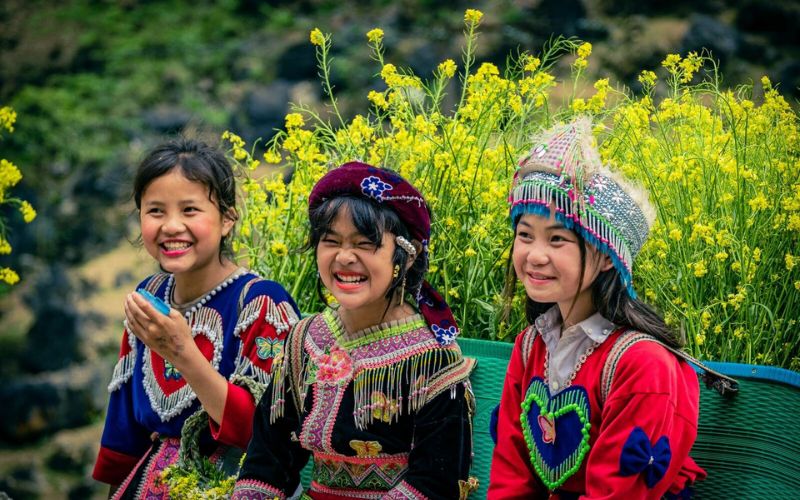
Traditional Festivals and Spiritual Life
Khau Vai Love Market – Where Romance Becomes Tradition
Held once a year in Meo Vac district, the Khau Vai Love Market Festival is one of Ha Giang’s most famous cultural traditions. Traditionally, couples who once loved but could not marry were allowed to meet here for one night each year to talk and reminisce, even if they had married other people. Today the event attracts many ethnic groups and visitors, with music, games and food stalls turning the village into a vibrant fair.
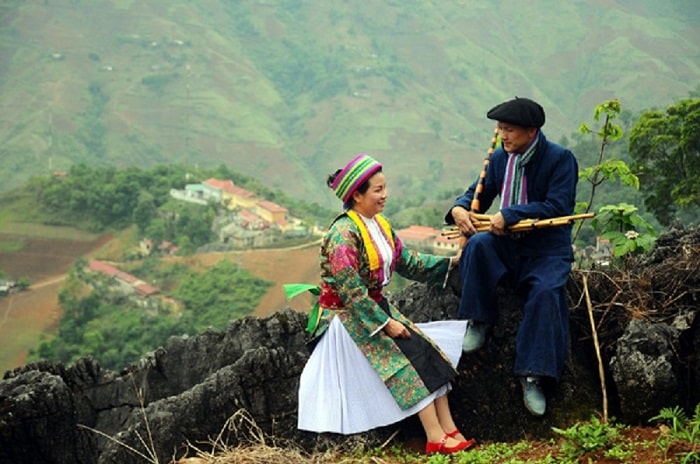
New Rice and Rice Offering Ceremonies
In areas like Hoang Su Phi, ethnic groups such as Dao, Tay, Nung and La Chi celebrate New Rice festivals after the harvest. For the La Chi people, the rice offering ceremony is one of their oldest rituals, giving thanks for a good harvest and praying for prosperity in the coming year.
These ceremonies usually involve:
-
Offerings of new rice, chicken and local wine
-
Prayers to ancestors and rice spirits
-
Community feasts with music and dance
Visitors staying in local homestays during these periods may be invited to observe or even join certain parts of the ritual.
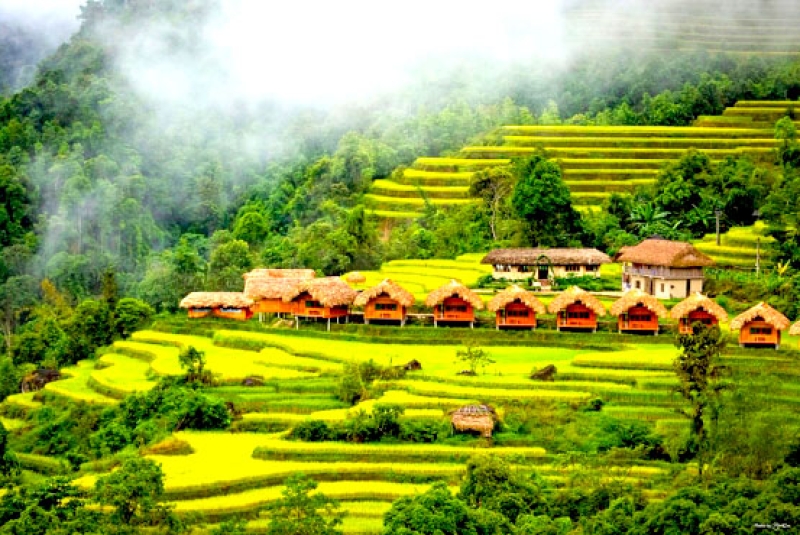
Markets: Weekly Fairs as Cultural Stages
Ha Giang’s mountain fair markets are living museums of culture. On Sundays and specific lunar days, people walk or ride from faraway villages to trade goods and meet friends.
-
Dong Van Sunday Market and Meo Vac Market are among the most famous, where Hmong, Tay, Dao and other groups gather in colourful clothing to sell livestock, textiles, herbs and food.
At these markets you’ll see:
-
Early-morning livestock auctions
-
Women selling handwoven fabrics and indigo-dyed clothes
-
Men sharing bowls of corn wine and smoking bamboo pipes
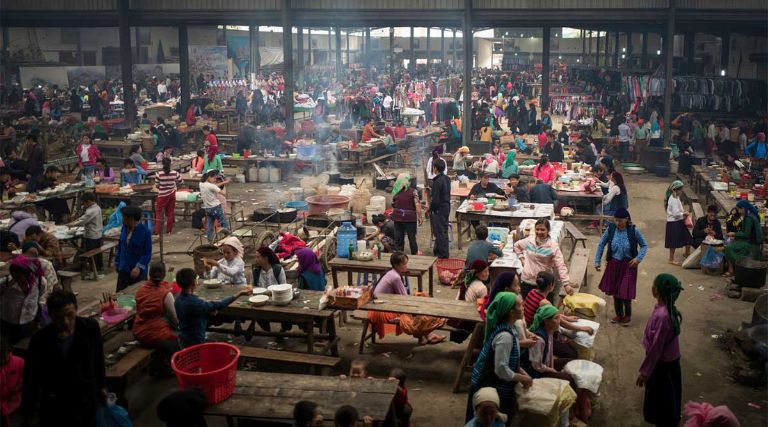
Traditional Crafts: Weaving, Hemp and Handicrafts
Lung Tam Hemp Weaving Village
One of the most impressive cultural traditions in Ha Giang is hemp weaving in Lung Tam village, home to Hmong artisans. For centuries, women here have grown hemp, processed the fibres and hand-woven them into strong, eco-friendly fabric.
The process includes:
-
Cultivating and harvesting hemp on steep mountain slopes
-
Soaking, drying and pounding the fibres
-
Spinning thread and weaving on traditional looms
-
Dyeing, often with natural indigo, and decorating with embroidery or batik
A single piece of linen can take up to 40 days of labour. Buying a scarf or bag here directly supports the preservation of this tradition and provides sustainable income for local women.
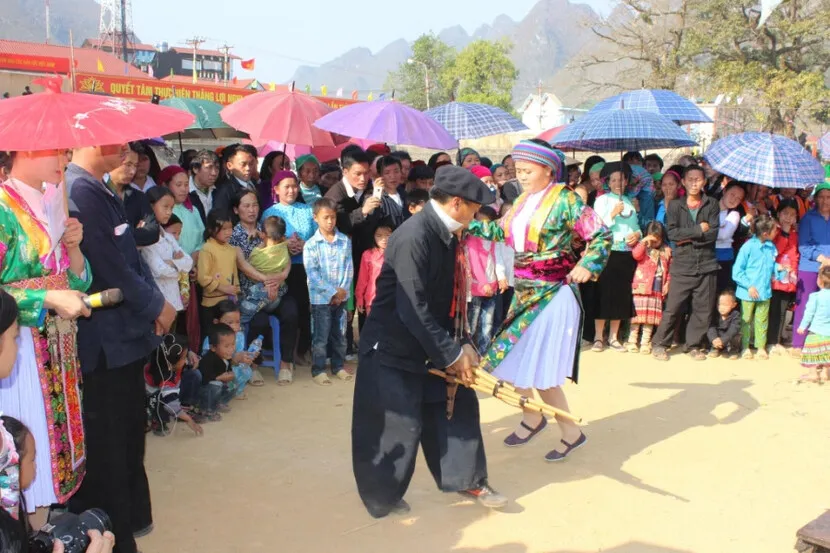
Woodwork, Silver and Bamboo Crafts
In many villages, men specialise in wood carving, bamboo basket weaving and silver jewellery making. These items are often used in daily life - baskets for transporting crops, silver pieces for ceremonies - and are sold at markets as well.
Family, Community and Daily Life
Cultural traditions in Ha Giang are not limited to festivals; they are embedded in daily routines.
-
Patriarchal or matrilineal elements vary by group, but respect for elders and ancestors is universal.
-
Many families still live in extended households, where multiple generations share the same house or courtyard.
-
Farming, especially maize and rice on terraced fields, shapes the yearly rhythm—ploughing, planting, harvesting and celebrating together.
Homestay experiences—now popular along the Ha Giang Loop—allow visitors to join these routines: cooking over a wood fire, helping in the fields, or simply sharing tea and stories with the host family.
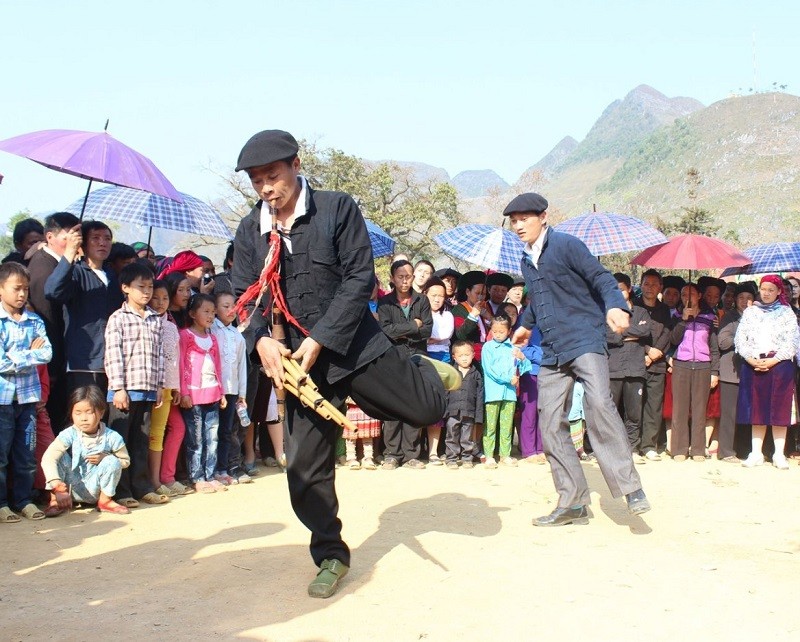
How to Experience Ha Giang Cultural Traditions Responsibly
To enjoy Ha Giang cultural traditions while supporting local communities:
-
Stay in ethnic-run homestays
-
Choose accommodations operated by Hmong, Tay, Dao or Nung families to ensure your money stays in the community.
-
-
Buy local, handmade products
-
Prioritise hemp textiles from Lung Tam, hand-embroidered items and locally produced honey, tea or spices.
-
-
Be respectful with photography
-
Always ask before taking close portraits. Avoid photographing spiritual rituals without explicit permission.
-
-
Learn basic phrases
-
Even simple Vietnamese greetings—or learning how to say “thank you” in a local language—can build bridges.
-
-
Travel off-peak and avoid over-tourism
-
Some villages are small and easily overwhelmed; choose lesser-known markets or spread your visits throughout the week.
-
-
Follow cultural norms
-
Dress modestly, take off shoes before entering houses, and accept tea or rice wine graciously (you can sip lightly if you don’t drink much).
-
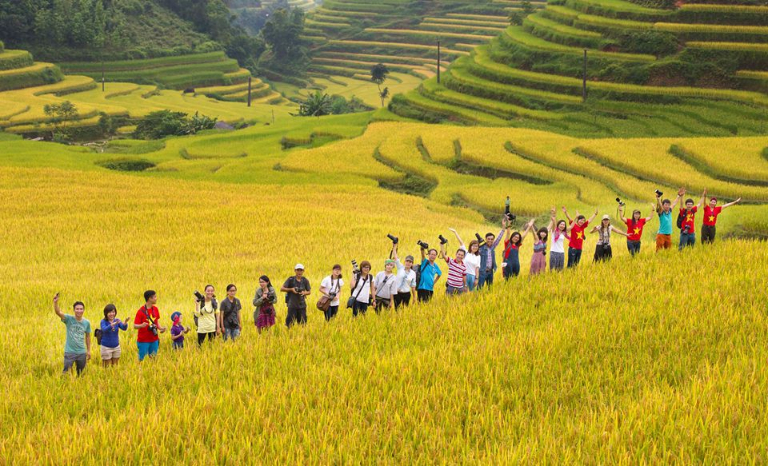
Conclusion: Ha Giang as a Living Cultural Landscape
Ha Giang is not just a place of towering limestone peaks and twisting roads. It is a living cultural landscape, where dozens of ethnic communities maintain ancient traditions while slowly adapting to modern tourism. From the colourful costumes and weekly markets to love festivals, rice ceremonies and hemp weaving, Ha Giang cultural traditions offer travellers a chance to step into stories that have been unfolding for generations.
If you plan a trip to northern Vietnam, don’t just ride the Ha Giang Loop for the views. Slow down, stay in local homes, visit craft villages, and time your journey with a market day or festival. In doing so, you’ll experience the true spirit of Ha Giang - written not only in the mountains, but in the lives and traditions of its people.
Ready to plan, get a price, or just ask questions?
👉 Call/WhatsApp The Loop Tours — Hotline: +84862443320


